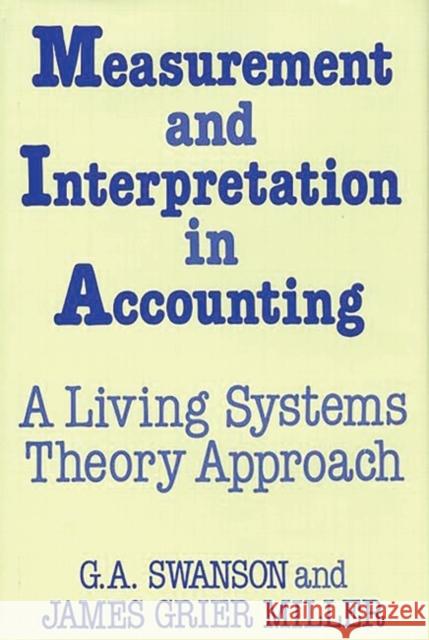Measurement and Interpretation in Accounting: A Living Systems Theory Approach » książka
Measurement and Interpretation in Accounting: A Living Systems Theory Approach
ISBN-13: 9780899304229 / Angielski / Twarda / 1989 / 235 str.
For many years, the accounting profession has attempted to construct a conceptual framework that logically ties together its many ideas and procedures. As this systems view of accounting emerges it is important, argue Swanson and Miller, to make the distinction between opinion or personal interpretation and empirical evidence. In this pioneering book, they develop a coherent theory of accounting measurement based on living systems theory (LST) and thus provide a fundamental framework for classifying the various accounting ideas and procedures into those that concern measurements of concrete economic processes and interpretations of those measurements.
Writing for advanced students of accounting and finance, the authors explain the distinctions among concrete, abstracted, and conceptual systems; discuss the concept of money in terms of concrete processes; and survey the connections between twenty LST defined subsystems and accounting information systems. Contrary to most modern accounting theory, they assert that the monetary scale is a ratio level measurement scale fully analogous to other measurement scales used by science. They reject the idea that the units of the scale are variable and show that this general perception arises from the fallacy of confusing the objects being measured with the units of the measurement scale. Using this scale, accounting's unique contribution to information processing is enabling managers and other social deciders to view the diverse matter-energy forms of a complex organization as a coherent whole on the attribute specific exchange value. Finally, Swanson and Miller analyze generally accepted accounting principles, highlighting areas in which the distinction between interpretation and empirical evidence is blurred in practice. They present an extended critique of the usefulness of such principles and propose new alternatives based on living systems theory that will improve both our understanding of accounting methods and measurements and the quality of accounting reporting. Numerous tables and figures enhance the presentation.











